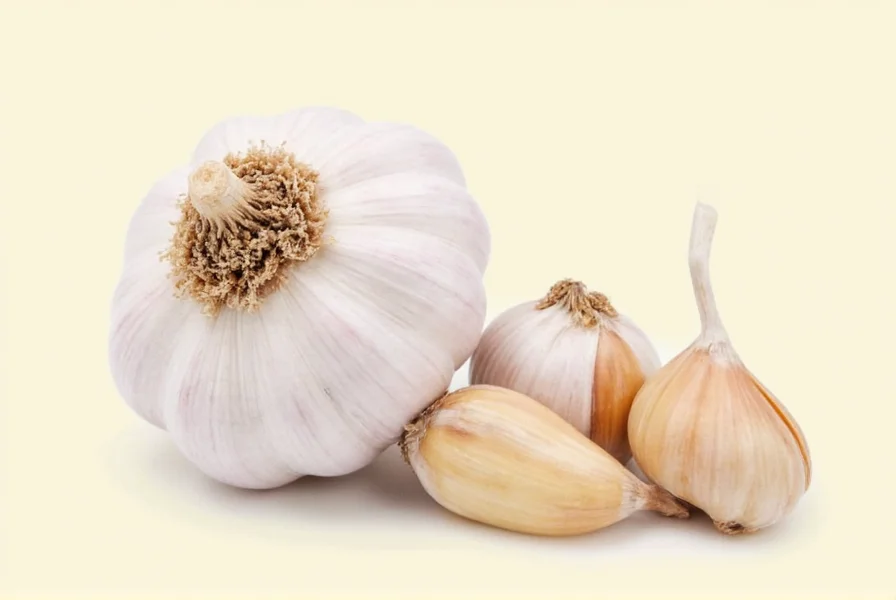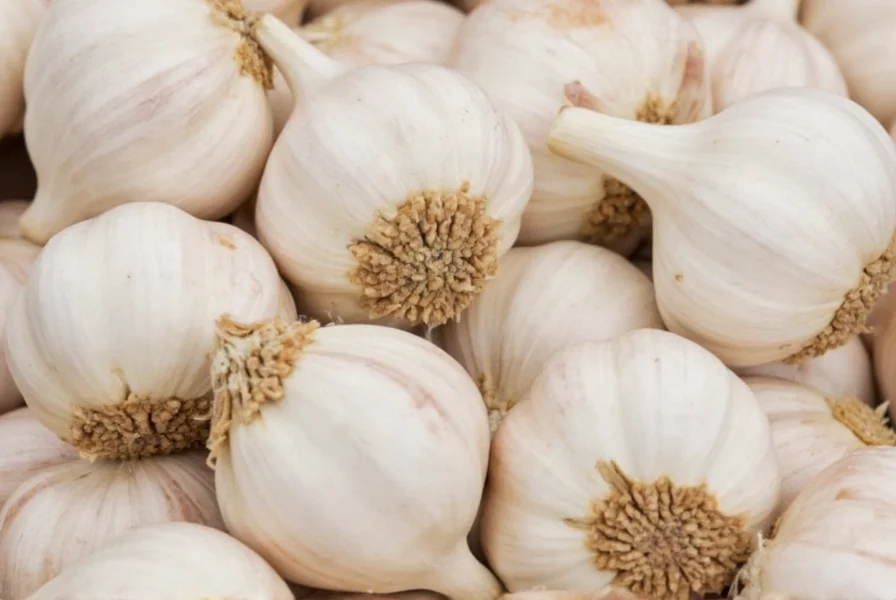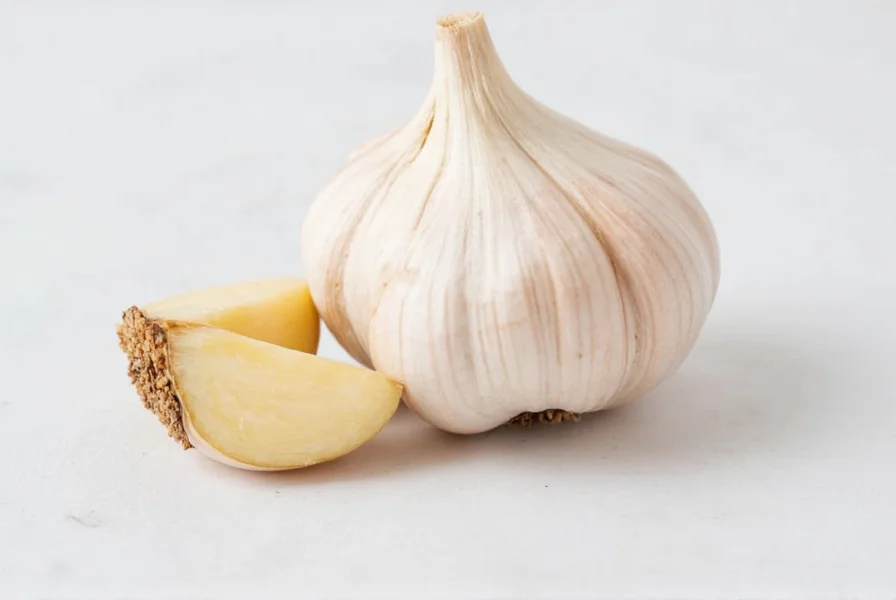When you encounter single clove garlic at your local market or specialty food store, you're experiencing a botanical rarity that's gaining popularity among health-conscious consumers and culinary enthusiasts alike. Unlike traditional garlic heads containing 10-20 individual cloves, this unique variety forms a single, round bulb that's easier to peel and use in cooking applications.
Understanding Single Clove Garlic: Nature's Concentrated Powerhouse
Single clove garlic, sometimes referred to as monocot garlic or pearl garlic, represents a fascinating genetic variation within the Allium family. This distinctive variety develops through natural selection rather than genetic modification, resulting in a complete garlic bulb that consists of only one large clove. The scientific name for this particular garlic variant is Allium sativum var. ophioscorodon, which distinguishes it from the more common Allium sativum var. sativum.
What makes single clove garlic particularly interesting is its natural formation process. During growth, the plant directs all its energy into developing a single, substantial clove rather than dividing resources among multiple smaller cloves. This concentration effect results in several notable differences compared to conventional garlic:
| Characteristic | Single Clove Garlic | Regular Garlic |
|---|---|---|
| Bulb Structure | One large, round clove | Multiple cloves (10-20) in a head |
| Peeling Difficulty | Extremely easy (one layer) | More difficult (multiple layers) |
| Flavor Intensity | Stronger, more concentrated | Milder, more balanced |
| Allicin Content | Higher concentration | Lower concentration per clove |
| Storage Duration | Shorter (3-4 weeks) | Longer (3-6 months) |
Geographical Origins and Cultivation
Single clove garlic thrives in specific climatic conditions, primarily found in certain regions of China, Korea, and parts of Eastern Europe. The most renowned variety, often called ELEPHANT GARLIC (though technically a different species), actually refers to a common misnomer—true single clove garlic is smaller than elephant garlic but larger than individual cloves from standard garlic heads.
Unlike regular garlic that requires careful separation of cloves for planting, single clove garlic cultivation involves planting the entire bulb. This simplifies the planting process but requires more space per plant since each bulb produces only one harvestable unit. The growing season typically spans 8-10 months, with harvest occurring when the leaves begin to yellow and dry.

Health Benefits of Single Clove Garlic
The concentrated nature of single clove garlic translates to potentially enhanced health benefits. Research indicates that this variety contains higher concentrations of allicin—the compound responsible for garlic's medicinal properties—when compared to equivalent weights of regular garlic. When you crush or chop single clove garlic, the alliinase enzyme converts alliin to allicin more efficiently due to the undivided cellular structure.
Studies examining the single clove garlic nutritional value reveal impressive findings:
- Contains up to 30% more allicin potential than regular garlic varieties
- Higher concentration of sulfur compounds linked to cardiovascular health
- Increased antioxidant capacity per serving
- More potent antimicrobial properties in laboratory testing
When considering single clove garlic health benefits, research suggests potential advantages for cardiovascular health, immune system support, and inflammation reduction. However, the stronger flavor profile means many people use smaller quantities in cooking, potentially offsetting the concentration advantage in practical applications.
Culinary Applications and Flavor Profile
The culinary world has embraced single clove garlic for its convenience and intense flavor. Professional chefs appreciate the how to use single clove garlic simplicity—it eliminates the tedious process of separating multiple cloves while providing consistent flavor intensity in recipes.
When cooking with single clove garlic, consider these expert tips:
- Use approximately 25% less than regular garlic due to its stronger flavor
- Perfect for roasting whole—simply remove the papery skin and toss with olive oil
- Ideal for garlic-infused oils as the single clove maintains integrity during infusion
- Excellent for pickling due to its uniform size and shape

Selecting and Storing Single Clove Garlic
When shopping for where to buy single clove garlic, look for firm bulbs with tight, unbroken skin. The outer wrapper should feel dry and papery, not soft or moist. Avoid any bulbs with green sprouts emerging, as this indicates aging and reduced flavor quality.
Proper storage is crucial for maintaining freshness. Unlike regular garlic that can last months, single clove garlic storage methods require more attention:
- Store in a cool, dark place with good air circulation
- Avoid refrigeration, which can cause premature sprouting
- Use within 3-4 weeks for optimal flavor and nutritional value
- Never store in plastic bags, which trap moisture and accelerate spoilage
Common Questions About Single Clove Garlic
Is single clove garlic genetically modified?
No, single clove garlic is not genetically modified. It occurs naturally through selective breeding and represents a specific variety of Allium sativum that has developed this single-clove characteristic through natural genetic variation. Farmers have cultivated this variety for centuries, particularly in certain regions of Asia where it originated.
How does the flavor of single clove garlic compare to regular garlic?
Single clove garlic typically has a more intense, pungent flavor compared to regular garlic. When raw, it can be up to 30% stronger, but when cooked, it develops a richer, more complex flavor profile with less bitterness. Many chefs prefer it for dishes where garlic is the star ingredient because its flavor remains more consistent throughout cooking.
Can I substitute single clove garlic for regular garlic in recipes?
Yes, but with adjustments. Due to its stronger flavor, use approximately 25% less single clove garlic than the recipe calls for in regular garlic. For example, if a recipe requires 4 cloves of regular garlic, use just one single clove garlic bulb (which is roughly equivalent to 3 regular cloves in size but stronger in flavor). This substitution works particularly well in roasted, mashed, or pureed applications where the garlic becomes the primary flavor component.
Why is single clove garlic more expensive than regular garlic?
Single clove garlic commands a higher price primarily due to lower yields and more labor-intensive harvesting. Since each plant produces only one usable clove instead of 10-20, farmers must dedicate significantly more land to produce equivalent quantities. Additionally, the specialized growing conditions and shorter shelf life contribute to the higher cost. The increased concentration of beneficial compounds also justifies the premium price for health-conscious consumers.
Does single clove garlic have more health benefits than regular garlic?
Research suggests single clove garlic contains higher concentrations of allicin and other beneficial compounds per unit weight compared to regular garlic. However, because people typically use smaller quantities due to its stronger flavor, the practical health benefit difference in everyday consumption may be minimal. The key advantage is convenience—getting the same potential health benefits with less preparation time and waste.











 浙公网安备
33010002000092号
浙公网安备
33010002000092号 浙B2-20120091-4
浙B2-20120091-4